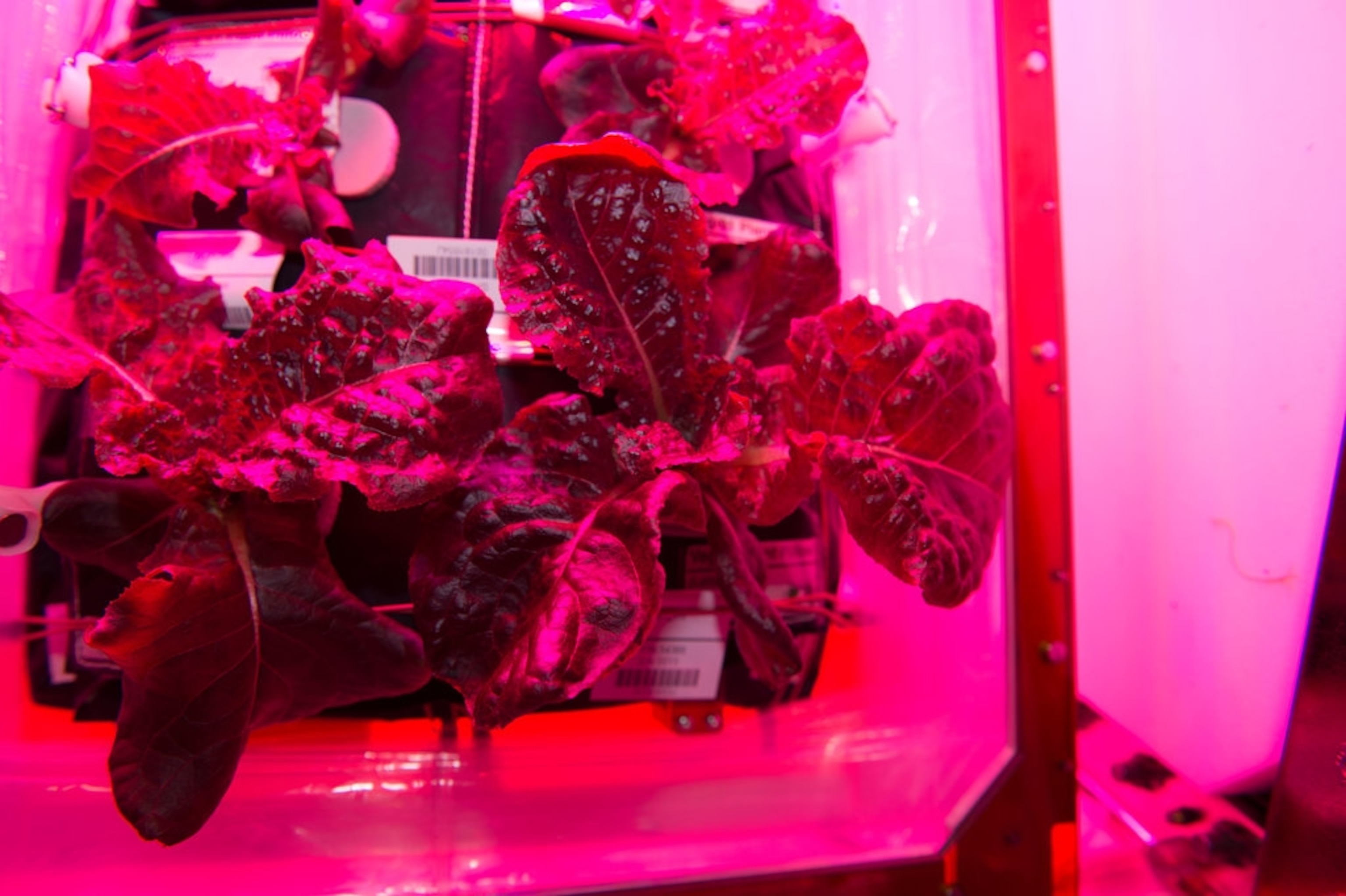
From Ancient Egypt to Outer Space, the Delicious History of Lettuce
The crew on board the International Space Station just got their first taste of locally-grown lettuce. The green (well, red) stuff in the astronauts’ salad bowls was a cultivar of a bright-red romaine lettuce called Outredgeous, edible either as youthful baby lettuce or as mature upright leaves.
The lettuce was planted, cultivated, and harvested entirely on board the station, sprouting in a collapsible growth chamber adorably known as Veggie from “rooting pillows” under red, green, and blue LEDs. (See Gardening in Space Gets Ready for Liftoff.) Served with a classic oil-and-vinegar dressing, the space leaves were a wild success. Astronauts dubbed them “awesome.”
It turns out that romaine lettuce was a great choice for a first cosmic munch. Its giant leap for vegetable kind adds one more historic date to its already impressive timeline, which stretches back some 5,000 years. Here on Earth, romaines are among the oldest—if not the oldest—cultivated lettuces on the planet, propagated at least by the third millennium BCE, when someone thought enough of them to picture them in ancient Egyptian bas-reliefs.
Like all the modern cultivated lettuces, romaine lettuce developed from a prickly and bitter wild lettuce, native to the Mediterranean and Middle East. In its original incarnation, nobody actually wanted to eat it. Instead it was prized for its oily seeds and for its milky secretion—technically, latex—which was touted as an aphrodisiac. The ancient Egyptians, for whom lettuce was Viagra, dedicated it to Min, the god of fertility.

Cool though this sounds, lettuce wasn’t, however, all about sex. The latex also contained terpene-based alcohols potent enough to make people sleepy, which was why by the Roman era, it was served at the end of feasts as a crunchy version of the doze-inducing nightcap. Later, as less-sleepy cultivars became available, it was shifted to the beginning of the banquet, as an appetite stimulant. Which might be helpful in space, where the bulk of the menu is freeze-dried. To say nothing of there being no wine.
Sativa
, according to Alan Davidson’s, comes in four different varieties, based on the shape of the leaves. In crisphead lettuces, the leaves are tightly packed in compact, cabbage-like heads. These are the least tasty, but unarguably the most shippable lettuces; California, which grows 75 percent of the U.S. lettuce crop, turns out
. Butterhead lettuces form loose, floppy-eared heads with tender, pale-yellow hearts; the Bibb lettuce, a prime feature of Kentucky Derby brunches, is a butterhead. Loose-leaf lettuces, such as the ever-popular Black-Seeded Simpson, don’t form heads at all.
The Space Station’s romaine lettuces—sometimes called cos lettuces, from the ancient Greek island of Cos —have elongated oval leaves with crunchy central ribs, shaped somewhat like kitchen tasting spoons. According to William Weaver’s 100 Vegetables and Where They Came From, romaine lettuce was perfected in Syria, where the leaves were used as handy edible scoops for tabbouleh. All lettuce varieties, except the stolid crispheads, come in both red and green forms.
Red romaine in space—which impatient astronauts seem to have gobbled at the immature baby-lettuce stage—was chosen because it grows well and rapidly, tastes good, and has low natural microbial levels. It’s also loaded with anthocyanins—the flavonoid compounds that give vegetables their gaudy red, purple, and blue colors. In plants, these act to protect against such environmental stresses as ultraviolet radiation, cold temperatures, and drought. In people, they reduce the risks of cancers and cardiovascular disease, and may even enhance cognitive function. In other words, a diet high in anthocyanins may make for healthier, sharper astronauts.
Next up on the International Space Station veggie list: tomatoes.
How to grow produce in space, or other environmentally-challenged places? It’s an emerging science, but people like National Geographic Explorer Caleb Harper are already on the case. He’s in charge of the OpenAg Initiative at the MIT Media Lab, where he’s building a data center for food that is not exposed to the natural environment. (See This Ag Innovator Wants to Find Your Broccoli by IP Address.)





